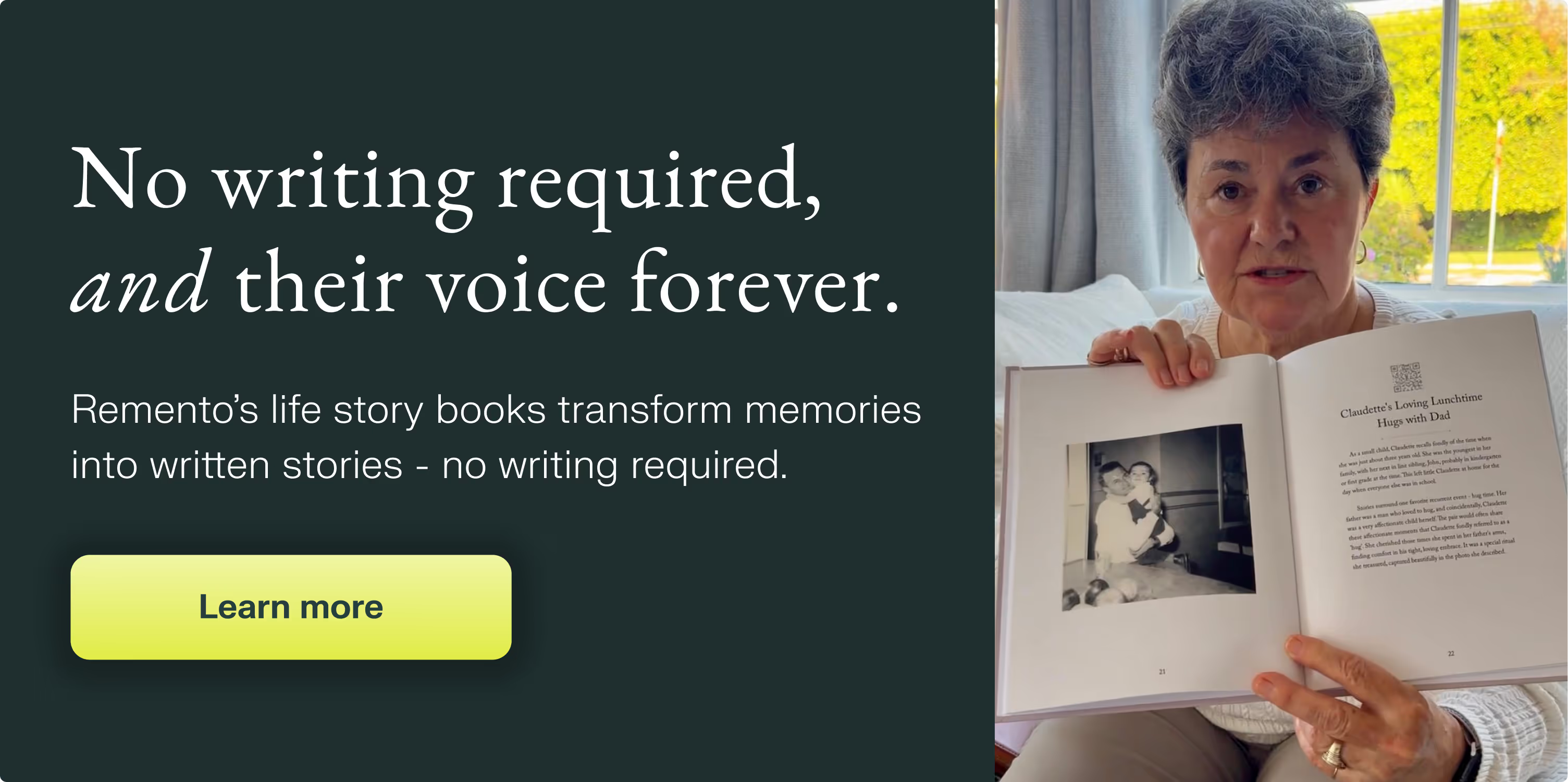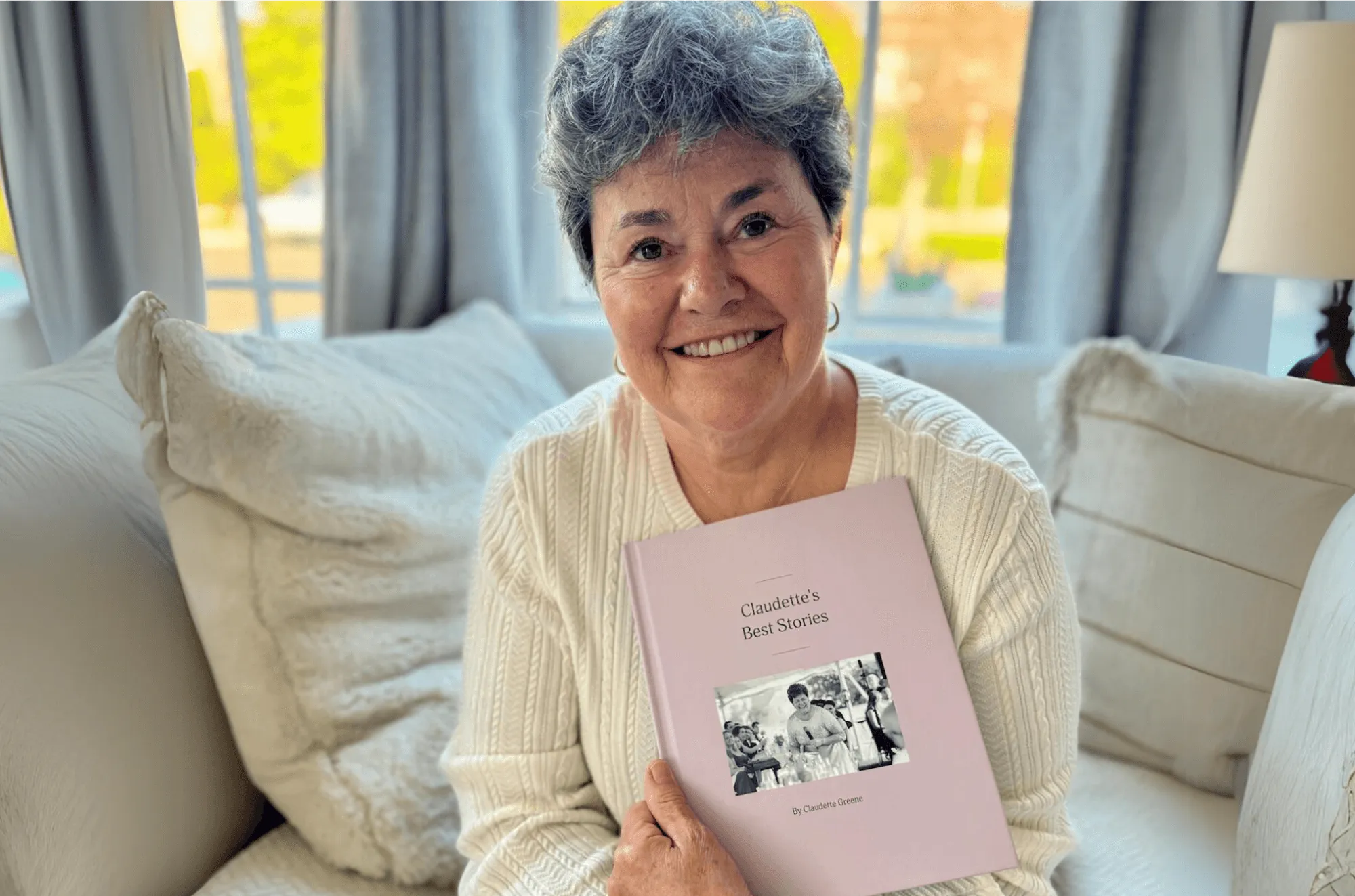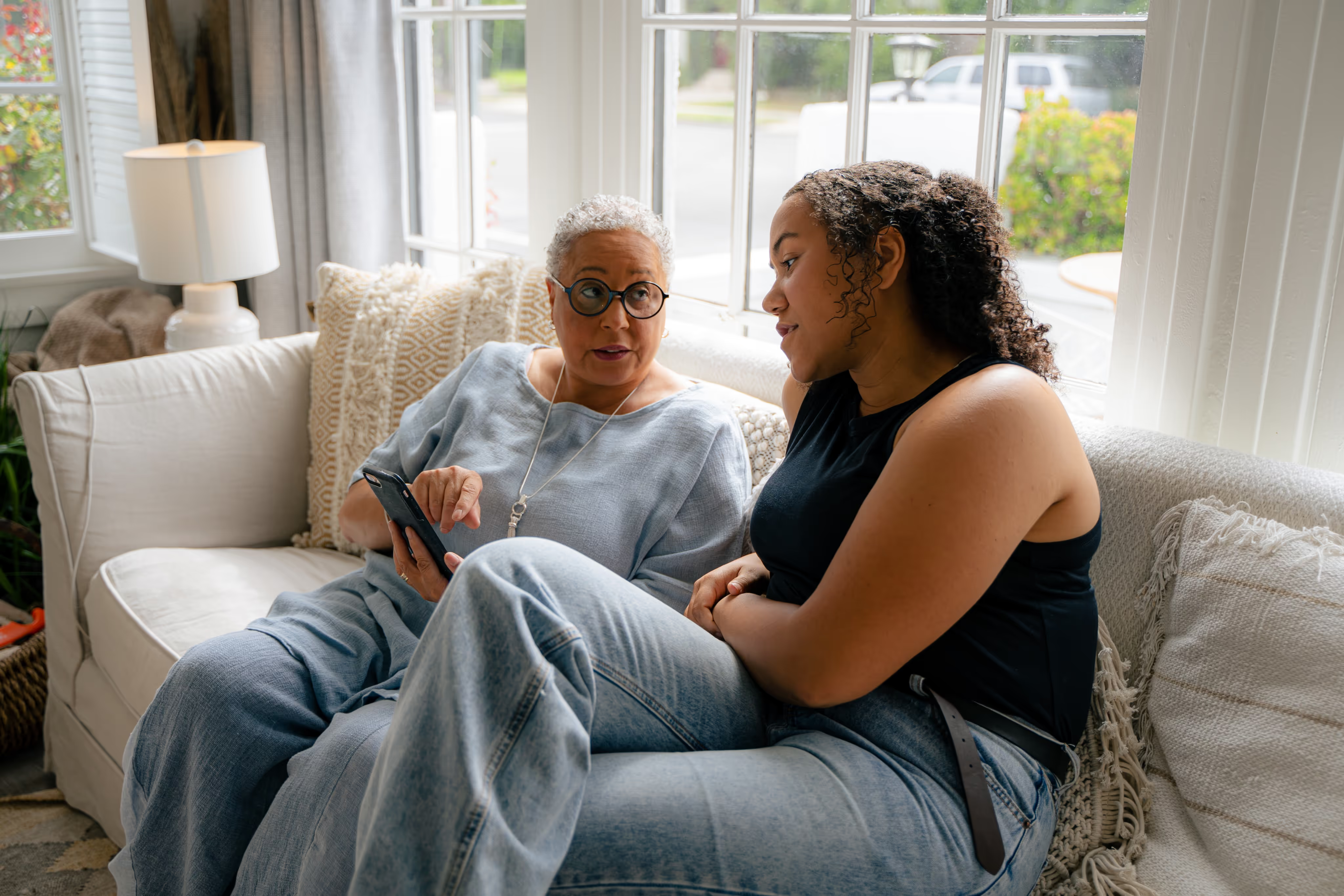Guaranteed to teach you things you never knew.
10 Tips for Interviewing a Family Member
The best interviewers create comfortable environments that foster meaningful conversation and honest sharing from their storyteller. Here are ten tips to help you do the same.
There are many reasons to interview a partner, relative, or friend. You may want to strengthen your relationship, get to know them on a deeper level, or record their life history and family stories before it's too late. Personal interviews are a powerful way to learn something new and carry the past forward for future generations.
This is the second installment in our three-part guide to help you prepare for and conduct an effective and meaningful family history interview with a loved one. Part one of this series focused on preparation, part two covers tips on the interview itself, and part three offers advice for conducting an interview remotely using a video conference tool like Zoom.
The best interviewers create comfortable environments that foster meaningful conversation and honest sharing from their storyteller. Here are ten tips to help you do the same:
- Begin with gratitude
- Share a discussion roadmap
- Ask clear, open-ended questions
- Capture or record the moment
- Use items or heirlooms to trigger memories
- Avoid interruptions
- Embrace pauses
- Be sensitive to certain topics
- Know when to stop
- Share the output
10 Tips for Interviewing a Family Member
1. Begin with gratitude
Start by thanking your storyteller for their participation and reminding them of why their involvement is important to you. If others have weighed in on the process, cite their gratefulness and excitement too. Reassure your storyteller that they are worthy of interest and that their stories matter to you and others.
Its easy to believe that our personal experiences are insignificant or lack any historical value worthy of capturing, but that is simply not true. Not only is there value in every life, but there is always something to learn from, to be inspired by, and worthy of sharing.
2. Share a discussion roadmap
Let your storyteller know what to expect and that its okay to take breaks, use the restroom, or get a drink – whatever they need. It can be helpful to communicate a thematic outline of your questions and what period of their life you plan to cover (e.g. “I’d like to start by asking you about your grandparents, then your parents, and then learn about your childhood.”)
Be sure to highlight that the session is not intended to be comprehensive, but instead the first of potentially a series of conversations. You may even want to set a time limit of 60-90 minutes so they know how long it will take.

3. Ask clear, open-ended questions
Clear, specific, short questions work best. Think of your interview structure as an inverted pyramid. Approach a new topic with an open-ended question that allows the storyteller to describe their experience at length (e.g. “Tell me about…” or “Can you describe…”), then go deeper with follow-up questions that probe for more detail.
Remember that you’re after narratives that illuminate a lived experience, not facts or opinions. Collecting specific details may be important for context (e.g. the whos, wheres, and whens), but the best questions are those that facilitate reflection (e.g. the whys, hows, and whats).
Need some inspiration? The Remento app is packed with expert-crafted questions, like 20 Questions to Ask Your Parents or Grandparents.
4. Capture or Record the Moment
Make the most of the precious time you have with your family member and be sure to preserve the conversation in some form. Even if you can’t be there in person consider conducting a family interview over Zoom. This way you can share the experience and reflect on the discussion for years to come.
Audio or video recordings of your interview are the best options. Video recordings can be edited easily and audio files can be transcribed automatically with software. This will ensure that your family stories live on forever. Feel free to use your own equipment or consider using the Remento app on your phone. Remento makes recording interviews painless, organizing each video by story so there is no need for editing.
Your storyteller may not be comfortable being on camera or recorded permanently. Do your best to understand their reservations and accommodate their wishes. If you are not able to record your conversation live, take detailed notes. Capture photos of the interview and include them with your notes to share and reflect on later.
5. Use Items or Heirlooms to Trigger Memories
Bring old photos or family heirlooms to trigger memories and add depth to stories. The questions you have prepared are great ways to start a discussion, but sometimes physical items from your relative’s past are even more impactful.
Family heirlooms that have been passed down for generations or have sentimental value will often trigger interesting stories about their origin or significance. Is there antique furniture from their childhood still around? Do they wear a favorite piece of jewelry handed down by their parents? These items can prompt wonderful memories that your questions may not have considered.
Favorite photos from a specific time in your family member’s life or photos with specific people are also great prompts. Photos can help refresh your storyteller’s memory or add color to a story you already planned to discuss.
6. Avoid interruptions
Feel free to redirect a conversation, but only after a train of thought has finished. Interruptions disrupt the narrative flow, break concentration, and detract from the purity of the recording. Remember, this interview isn't about you (at least not this one). For long-winded storytellers, consider using body language or clear expectations at the opening to keep the conversation moving.
The questions or prompts you prepare for your interview should only be a rough guide. If you notice your storyteller is excited to talk about one memory in particular, encourage them to continue. Allow your family member to determine the direction of the conversation if they have more to say.
7. Embrace pauses
Sometimes the best follow-up question is actually no question at all. A five-second pause as you finish a note often leads to additional, more personal reflections. Reserve your voice to guide your storyteller as needed, letting their stories and recollections unfold. Often one thing will lead to another naturally. You may be surprised by what you discover!
8. Be Sensitive to Certain Topics
You may find that certain questions or memories are sensitive or difficult to approach for your family member. For example, if you are interviewing a veteran, reliving memories from active duty may be difficult for them.
Don’t shy away from important topics in their life but make sure to be sensitive to their emotional state. Encourage them to share as much or as little as they feel comfortable. Use verbal and non-verbal cues to demonstrate how meaningful and important it is that they are sharing with you.
For certain stories, your family member may be more comfortable discussing their life “off the record.” Offer to stop recording the video or audio if you approach a sensitive topic that they’d still like to discuss. Your storyteller should feel like they are in control of what parts of their lives they will share.
9. Know when to stop
90 minutes is usually the right amount of time for an interview, after which both you and the storyteller may tire. If you don’t get to all the topics you wanted to cover, schedule another conversation or consider making this a regular part of your interactions together. Your first interview could be the foundation for an incredible journey of discovery or even a new family tradition!
10. Share the output
Congratulations! The interview (or the first of many) is over. But your responsibility to your storyteller shouldn’t stop there. Make sure to share the final output of the interview with your family member to demonstrate how special this opportunity was. By this point, they’ve invested considerable time and energy into the conversation. Your family member will find it much more rewarding if they can appreciate what you’ve done with their stories.

Their stories, forever at your fingertips
Remento’s life story books turn a parent or grandparent’s memories of the past into a keepsake book for the future - no writing required.
Capture priceless family memories today
Join the thousands of families using Remento to preserve family history, all without writing a word.
.avif)
